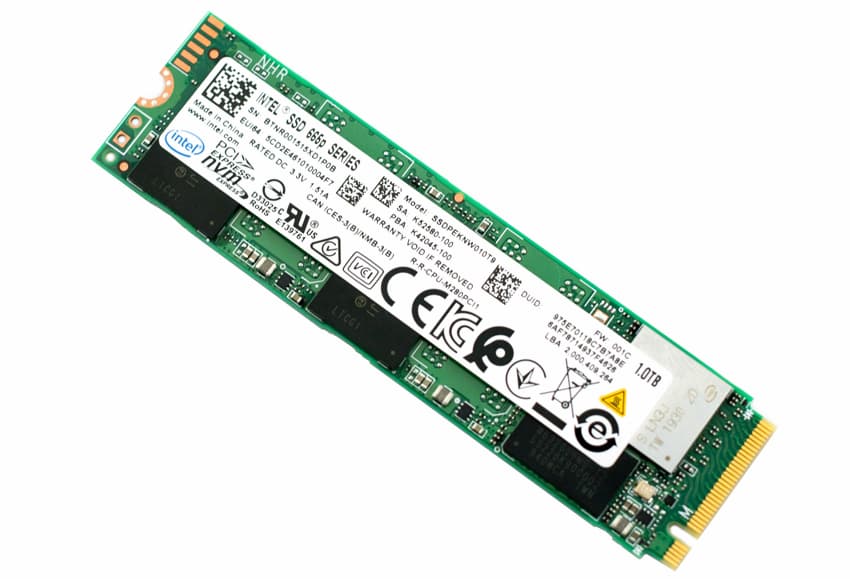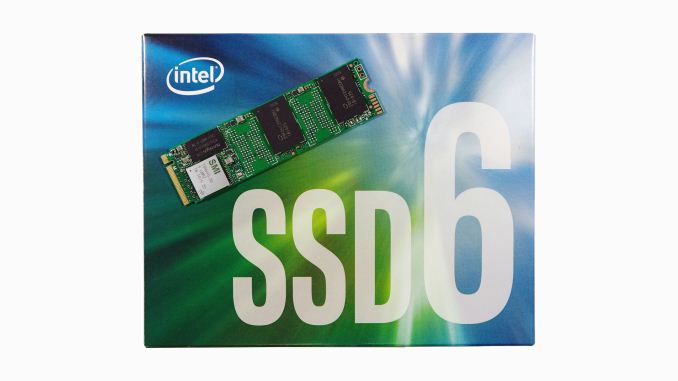
In terms of absolute performance, the Intel SSD 660p may not be the consumer class SSD leader, but it provides excellent value for the money.
A quick look at Intel SSD 660p 2TB Review: The 2TB Intel SSD 660p lacks high endurance and has subpar direct to QLC write speed, just like other capacities of the drive. Under consumer-based workloads, however, you get reliable performance and efficiency. Additionally, it frequently goes on sale and is significantly less expensive than the competition, making it one of the best SSD values out there.
Please continue reading for more information.
Table of Contents
Customers Reviews Of Intel SSD 660p 2TB
- While many people are dubious about QLC memory, we can assure you that Intel did a great job in developing the Intel SSD 600p. It comes with a 5-year warranty, AES 256-bit hardware encryption support, and some very impressive performance results to brag about. It is a great buy for the majority at $0.20 per GB. However, if you need to write for an extended period of time, don’t cut corners. Our 1TB sample’s 200TBW endurance is only 1/6th that of the 970 PRO’s and 1/3rd that of the majority of mainstream NVMe SSDs.
- Even though write speeds can drop dramatically to 100MBps when very large amounts of data are written to the drive or when it starts to fill up, the Intel SSD 660p will revolutionize the low end of the NVMe market with very good performance at an unheard-of price. Be aware that the 512MB version performs much less quickly.
- The Intel SSD 660p provides excellent value for the money even though it may not be the consumer class SSD with the highest absolute performance. The 512GB Intel SSD 660p has an MSRP of $99, and the 1TB version is only $199. These costs come out to about $0.19 per gigabyte, which is among the lowest prices for any SSD—let alone a contemporary NVMe drive that has been optimized especially for commonplace computing applications—that we have ever seen. And that’s assuming they sell at MSRP because many of Intel’s drives currently have street prices that are less than MSRP.
- Intel has a reputation for producing some of the highest-quality SSDs on the market for as long as solid state drives have existed. The 750 series, when they first debuted, was an example of how this frequently came with a sizable premium. Then, in August of…
- Because of the associated costs, you may have put off switching to NVMe solid-state storage, but circumstances have changed. This week Intel introduced their 660p SSD series that yields 512GB of NVMe storage for $99 USD or 1TB for $200 USD.The Intel…
- The Intel SSD 660p, the first SSD with QLC NAND to reach our testbed, offers long-awaited concrete evidence to dispel the myths and concerns surrounding QLC NAND. With only a short time to review the drive we haven’t had time to do much about measuring the…
- It’s been ages since we reviewed a new client 2.5″ HDD, but the last time we did, the 2TB drive recorded 4K random read IOPS of just under 100, whereas the 660p is expected to reach 60,000. Although today’s sequential tests aren’t exactly the same as the ones we ran with the HDDs, the 660p still achieves large block sequential read and write speeds of 225MB/s and 77MB/s, respectively, compared to the HDD’s 115MB/s and 110MB/s. So, in terms of the market Intel is trying to target with the 660p, they were successful in hitting the mark. The 660p is designed to fill a need at the mobile bulk storage end of the spectrum and continues the attack on 2.5″ HDDs, which have a very short shelf life.
- The SSD 660p from Intel is a little shocking. Not only is this NVMe drive the first Quad-Level Cell (QLC/4-bit) SSD on the market, which portends larger-capacity offerings, it’s faster during everyday use, and far cheaper—$200 for 1TB—than even the…
- The first company to provide us with a 4-bit, quad-level cell drive for testing is Intel, and QLC NAND Flash has arrived. The introduction of more terrabyte-SSDs is made possible by this, which is great for consumers as it will help to bring down SSD prices…
SQL Server Performance Of Intel SSD 660p 2TB
For a proper representation of what an application developer would use on a local workstation, we use a lightweight virtualized SQL Server instance. The test is similar to what we run on storage arrays and enterprise drives, but it has been scaled down to better approximate end-user behavior. The workload uses the most recent version of TPC-C, a benchmark for online transaction processing that simulates the activities present in complex application environments.
The small SQL Server VM is set up with three vDisks: a 100GB volume for booting, a 350GB volume for the database and log files, and a 150GB volume for the database backup that we restore at the end of each run. Each virtual machine is set up with 16 virtual CPUs, 32 gigabytes of DRAM, and an LSI Logic SAS SCSI controller in terms of system resources. Dell’s Benchmark Factory for Databases stresses SQL Server 2014 while it is running on Windows Server 2012 R2 guest VMs for this test.
SQL Server Testing Configuration (per VM)
- Windows Server 2012 R2
- Storage Footprint: 600GB allocated, 500GB used
- SQL Server 2014
- Database Size: 1,500 scale
- Virtual Client Load: 15,000
- RAM Buffer: 24GB
- Test Length: 3 hours
- 2.5 hours preconditioning
- 30 minutes sample period
Design And Features Of Intel SSD 660p 2TB
The M.2 2280, PCIe x4/NVMe 660p, 1TB version that Intel sent us. The absence of a label or heat sink served to draw attention to the PC board’s surprisingly low density. Only two memory chips and what appears to be a DRAM chip are present on one side of the device. Expect 2TB and possibly 4TB models in the near future based on the images Intel sent us, which show the company can fit four chips on each side with ease. There is currently only our 1TB version and a 512GB version for $99 available. Note that the latter is much slower, and I’ll explain why below.
Even though Intel hasn’t announced it and we only have the 1TB unit with two NAND chips, this drive has a capacity of 2TB. Fill the other side, and you’re talking about a 4TB, M.2 2280 NVMe SSD.
The memory consists of 64 layers of Quad-Level Cell NAND. In comparison to Triple-Level Cells (TLC), Multi-Level Cells (MLC), and Single-Level Cells (SLC), Quadruple-Level Cells (QLC) allow each cell to store four bits of data.
Although the drive did quite well during routine testing, this was due to caching strategies. When written natively, QLC is slower than TLC, according to Intel, who was very upfront about this.
If your laptop has an M.2/PCIe NVMe slot and can support booting from NVMe, you’ll appreciate the 1TB 660p’s thin and light design when you want to upgrade it. It should be noted that the slot will require at least four PCIe lanes in order to utilize the full performance of the 660p.

Dynamic Cache Of Intel SSD 660p 2TB
Although the DRAM and SLC caches on the 660p are static, a secondary SLC cache with variable size is what gives the device its long-term performance. How can you change the cache’s size? It is much quicker to write one bit than the entire four bits when using a portion of the main body of QLC and treating it as SLC. The 660p dynamically assigns more QLC to be treated as SLC when necessary, and when time permits, transfers its contents to QLC writing the entire four bits. That’s the main lesson I learned from the presentation, at least.
When we ran our usual battery of tests, there was no slowdown at all, so it performed quite well. But when I started upping the data count, things happened…
By The Numbers
Although the performance of the Intel SSD 660p (gold bars) isn’t as fast as the fastest NVMe SSD we’ve tested, it is quick when compared to budget TLC drives. Naturally, you wouldn’t know it from our AS SSD 2.0 results, which showed a stupefyingly low 200MBps sequential (large file) reading speed. Reading, not writing, that is. I have never before observed that from an SSD or during a test. Ever.
Ignore this strange result because neither the real-world results nor any other artificial benchmarks supported it. According to Intel, this doesn’t happen when using its own Rapid Storage drivers. Throughout our other testing, we relied solely on the built-in Windows 8.1 drivers.
We don’t know what caused the odd read score in AS SSD, but it wasn’t consistent with actual performance. This anomaly is said to be eliminated by Intel’s RST (Rapid Storage Technology) drivers.
In this particular case, the results from CrystalDiskMark were much more accurate. There is a reasonable sequential read result, but it is not nearly as good as what you would expect from high-end drives like the Samsung 970 Pro. Using random numbers to measure small file performance and sequential numbers to measure large file performance.
The Intel 660p scores well above the typical budget drive, like the Toshiba RC100, according to CrystalDiskMark 6, but it falls short of the Samsung 970 EVO or Pro. However, the 660p is much less expensive than both while maintaining fast seek times.
The results of our 48GB copy tests, which simulate copying large files like movies and documents, supported CrystalDiskMark’s assessment and my own subjective impression. I wouldn’t hesitate in the slightest to use this drive on a daily basis in my computer.
In our 48GB copy tests, the Intel did quite well. Because its cache fills up before the transfer is finished, the 970 EVO loses efficiency when writing a single file. The 660p will also eventually run out of cache, just not as quickly.
The results shown here are for a 1TB drive, take note. According to Intel, the sequential write and random read scores for the 512GB version were significantly lower—by about half. This is due to the 512GB drive only having one chip, as opposed to two. You’ve effectively cut the number of pipes that can be used to shotgun data in half.
Best Budget Drive, Maybe…
After finishing our standard testing, I was prepared to declare the 660p the best of the cheap NVMe SSDs and a threat to its faster rivals due to its absurdly low price. That straightforward conclusion was abandoned when I later noticed that writes had fallen to 100MBps.
The 660p is actually much faster than any other low-cost NVMe SSD we’ve tested while in cache, and most users won’t even notice the drop to 100MBps writing. Because of that, I still think it’s a great deal and a benefit for those on a tight budget.
Just remember that the drive is inexpensive for a reason. Therefore, drives like the Kingston A1000, which costs $220 (less than half what it did when we reviewed it) for 960GB as of this writing, should continue to be discussed.
The Competition
We primarily compare the Intel SSD 660p to other entry-level NVMe drives and to SATA drives because it is positioned as a very affordable entry-level NVMe SSD. Due to its consistent low price and reliable all-around performance, the Crucial MX500 continues to serve as our stand-in for mainstream SATA SSDs. The Toshiba RC100 DRAMless NVMe SSD, which uses the Host Memory Buffer feature, the Kingston A1000, which is based on the Phison E8 processor, and the Intel SSD 600p, which preceded the 660p, are the other low-end NVMe SSDs in this review.
Specifications
| Product | Intel SSD 660P 512GB | Intel SSD 660P 1TB | Intel SSD 660P 2TB |
|---|---|---|---|
| Pricing | $64 | $97 | $204 |
| Capacity (User / Raw) | 512GB / 512GB | 1024GB / 1024GB | 2048GB / 2048GB |
| Form Factor | M.2 2280 (single-sided) | M.2 2280 (single-sided) | M.2 2280 (single-sided) |
| Interface / Protocol | PCIe 3.0 x4 / NVMe 1.3 | PCIe 3.0 x4 / NVMe 1.3 | PCIe 3.0 x4 / NVMe 1.3 |
| Controller | SMI 2263 | SMI 2263 | SMI 2263 |
| DRAM | NANYA DDR3L | NANYA DDR3L | NANYA DDR3L |
| Memory | IMFT 64L 3D QLC | IMFT 64L 3D QLC | IMFT 64L 3D QLC |
| Sequential Read | 1,500 MB/s | 1,800 MB/s | 1,800 MB/s |
| Sequential Write | 1,000 MB/s | 1,800 MB/s | 1,800 MB/s |
| Random Read | 90,000 IOPS | 150,000 IOPS | 220,000 IOPS |
| Random Write | 220,000 IOPS | 220,000 IOPS | 220,000 IOPS |
| Encryption | AES-256 | AES-256 | AES-256 |
| Endurance | 100 TBW | 200 TBW | 400 TBW |
| Warranty | 5-Years | 5-Years | 5-Years |
| Part Number | SSDPEKNW512G8 | SSDPEKNW010T8 | SSDPEKNW020T8 |
Conclusion
A PCIe 3.0 x4 SSD in an M.2 2280 single-sided form factor is the Intel SSD 660p. It only weighs 5.5g and uses the NVMe 1.3 protocol to communicate with the host system. On the 1TB PCB, there are two 512GB 64-layer QLC flash emplacements.
SMI’s 2263 SSD controller and exclusive Intel firmware are included with the 660p. Along each side of the controller is a single 256MB NANYA DDR3L DRAM chip. The Intel 660p has 1MB of DRAM per 4GB of flash as opposed to the typical SSD’s 1MB to 1GB ratio. The Host Memory Buffer (HMB) feature, which stores a portion of the LBA map in system memory, may have been implemented by Intel or it may be that Intel is compressing the LBA map.
Regarding your reading, I thank you.
Read about








